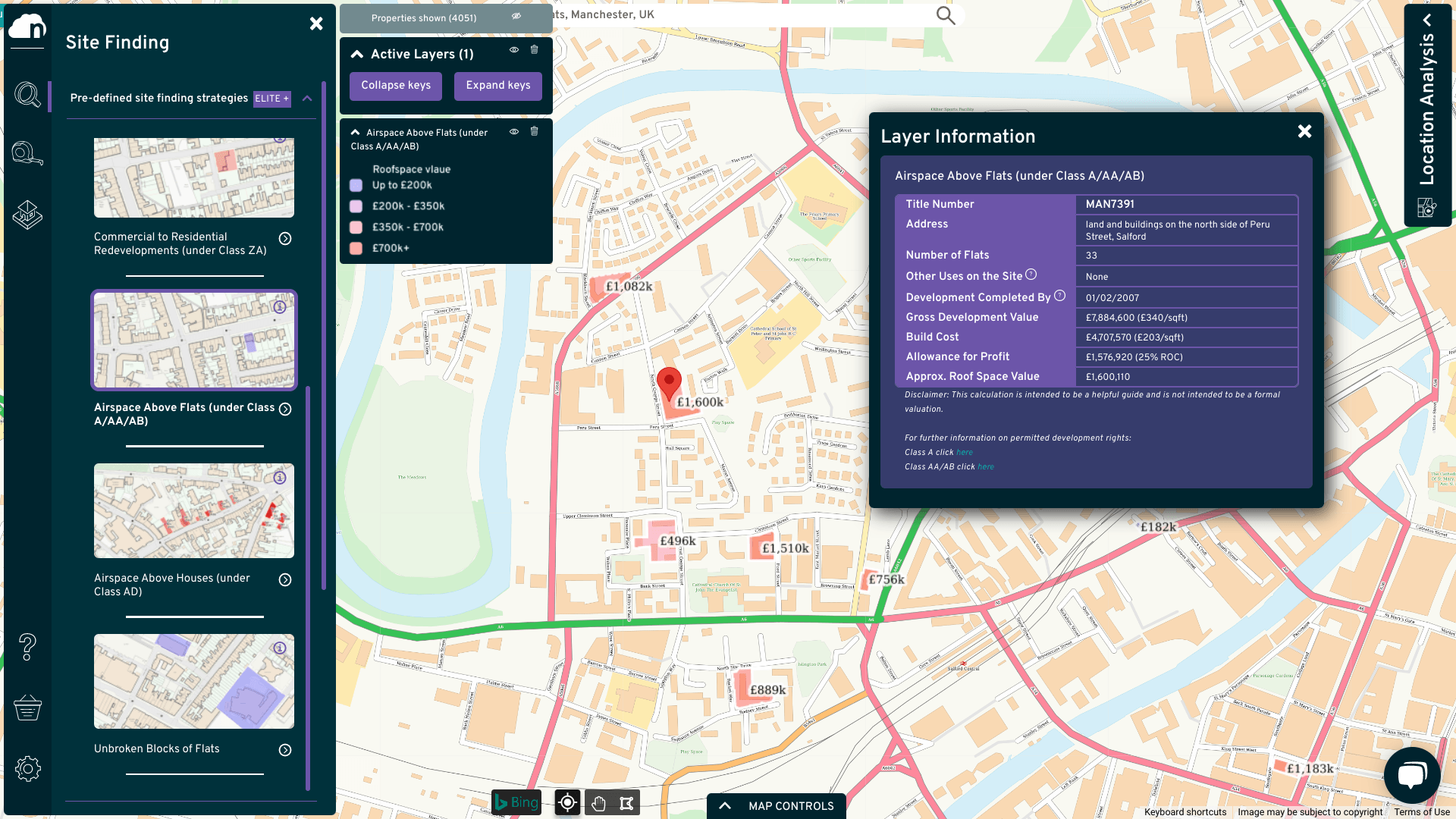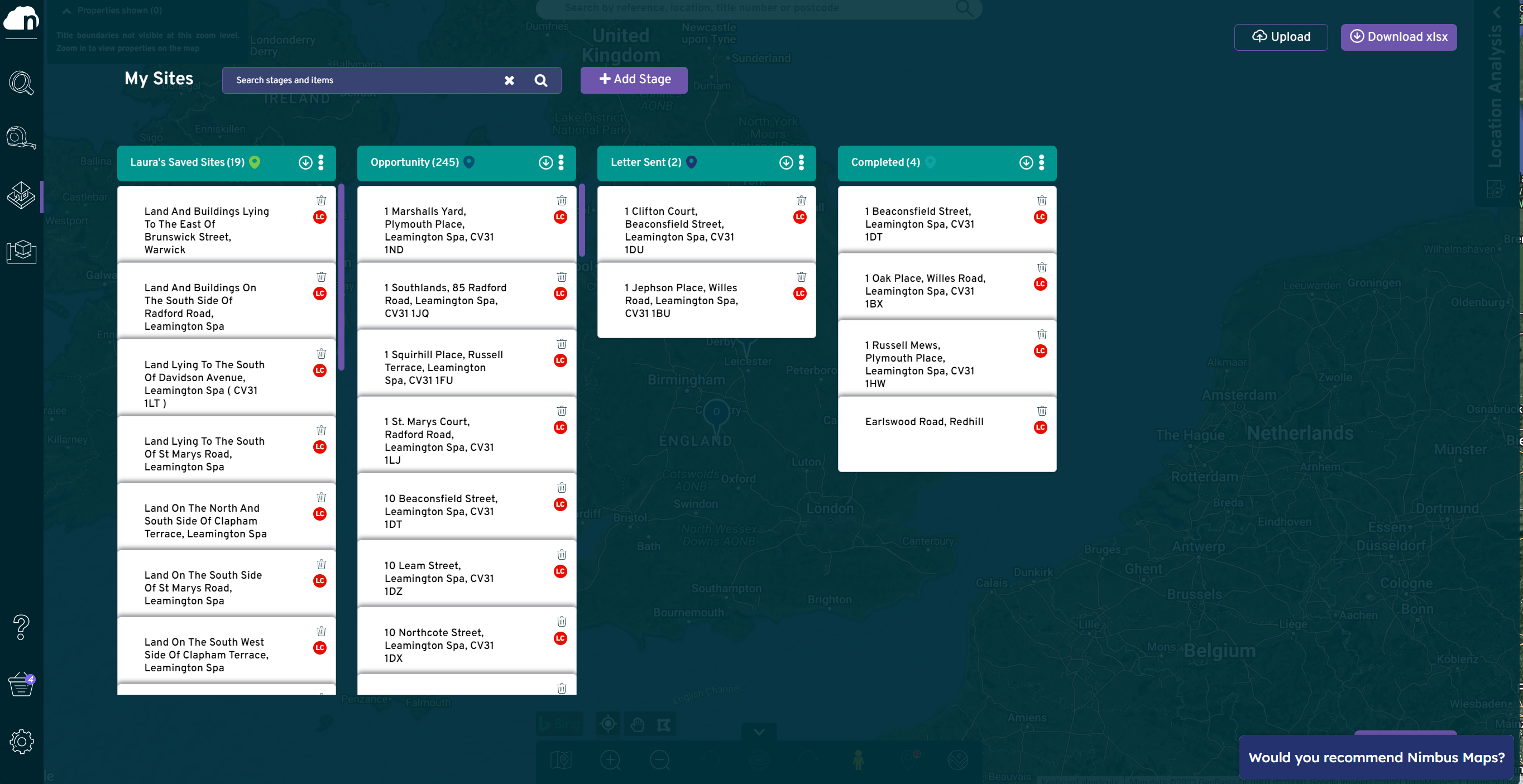Ready to turn your existing building into a potential goldmine? The recent relaxation of planning rules now allows you to add flats to the "airspace" above your property. But with opportunity comes challenges.
How do you make this strategy viable? What pitfalls should you watch out for? And what are the insider tips and tricks for successful commercial property developers and investors?
Look no further, we're about to explore the 5 top strategies for successful commercial airspace conversions, based on the new permitted development rights.
Shortcuts ✂️
First things first, what is 'Airspace Development?' 🤷
In simple terms, airspace development refers to building new residential homes in the ‘air rights’ on the roof of an existing building. Changing rules and planning regulations have led airspace development to become an increasingly popular opportunity for commercial property developers and investors.
Want to know if your property plans qualify for Permitted Development Rights (PDR)?
If your plans are for a two-story addition on top of existing residential flats, PDR might apply to you. However, prior approval is necessary and you must adhere to the permitted development regulations, including minimum room sizes and natural light requirements. Here are the key criteria to keep in mind:
- Your building must have been built between 1 July 1948 and 5 March 2018 and be at least three stories above ground level.
- If your building is staggered, the higher part must be the focus of the addition.
- The new addition's floor-to-ceiling height must not exceed three meters or be higher than the ceiling height of any existing storeys.
- The new units must be freestanding flats.
- The height of the existing building's roof can't be more than 7 meters higher than the highest part of the existing roof.
- The finished structure cannot be more than 30 meters in height (excluding plant) and cannot have any external support structures.
Even with PDR rulings, some developments may face local objections, so it's important to engage with your planning officers early on to assess the complexity of the project. The sooner you start, the better your chances of success.
The 5 best commercial airspace development strategies 🏗
Commercial airspace development presents a fantastic opportunity for experienced property developers and investors to create new development opportunities in a cost-effective and profitable way.
Here are the top 5 commercial airspace development strategies that we recommend:
1. Choose the right air space approach
First and foremost, with six different categories of Airspace Development under Permitted Development, you need to select the right strategy that will add the most value. Essentially, you can knock down old buildings to build new ones with additional floors or simply add stories to an existing building.
Here’s a quick summary of the six permitted development approaches:- Class ZA – Demolition & construction of new flats
- Class A – Detached blocks of flats
- Class AA – Flats on detached commercial
- Class AB – Flats on terraced commercial
- Class AC – Flats on terraced houses
- Class AD – Flats on detached houses
2. Identify low-rise residential blocks
We tend to find that the best opportunities are within urban areas with good transport links. Look for residential blocks that are at least three storeys (including the ground floor).
The reason these types of buildings are ideal for airspace development is that residential blocks are often designed with enough strength to support additional storeys. In addition, they often have car parking. Look for between 2-12 units to keep it under the affordable housing limits.
3. Consider the use of offsite manufacturing (OSM)
Offsite manufacturing or OSM is a brilliant way to build on your airspace. Essentially, it refers to structures or components built at a different location than the location of use.
This helps to improve both quality and speed of development, all while de-risking the construction process. In addition, there are often fewer tradespeople on-site and less disruption to existing tenants. It’s also far more sustainable than traditional methods.
4. Make sure you gain the right access
Gaining the right access on-site is key for airspace developments. Consider access for cranes and scaffolding. You might also need site cabins or offices, and storage for materials.
It’s also key to get existing tenants on the right side from the start and regularly keep them updated on development progress as maintaining a good relationship will help to make development easier for you.
5. Look for buildings with flat roofs
Finally, for obvious reasons, a flat roof is essential for airspace builds. It’s also key to look out for buildings that are shorter than what’s directly next door. This means you can build in the airspace with fewer issues raised from neighbouring properties.
Now that we know which approaches are worth considering, let’s take a look at a complete workflow for airspace development.
Red flags to look out for when approaching an airspace development 🚩
While airspace can prove to be a highly profitable opportunity, there are a few red flags to look out for when choosing sites to develop.
A thorough roof examination will need to be done in person - or through drone roof surveyor services to examine any issues such as:
- Telecommunication masts - this is a major one, and it’s incredibly hard to work around. So if you do find a telecommunication mast, unfortunately, this can often mean it's a no-go from the outset.
- Utility cupboards - we can move these, however, this could cause issues for current tenants. Building a rapport with existing tenants from the outset will especially help here.
- Materials that might signify the roof is used by the tenants - this one could be discussed with the tenants depending on usage.
- Light shafts - this is a key one, as it might be impossible to move it to a more suitable place.
- Surface water drainage systems - this could cause issues and be quite costly to workaround.
- Lift shafts - this can also cause issues - as you can imagine, moving a lift is an incredibly expensive undertaking.
Airspace key challenges checklist
Next, let’s look at some of the key challenges you might run into. While these might not necessarily kill a deal (like the red flags above), they do need careful consideration:
-
Pipeline: It’s taken some time for freeholders to understand it and want to get involved.
-
Structural support: A structural engineer will need to check the load-bearing abilities of the building. The process is pretty straightforward once you know what you’re building.
-
Access: The development will more than likely need a crane to get the materials onto the roof. This could occur over-sail costs.
-
Negotiating possession: This is where leases and ownership come into play. It’s super important that your solicitor is able to find out whether the airspace can be sold by the freeholder.
-
Existing leases: These need to be thoroughly inspected to check what rights the tenants have.
-
Rights for light: Make sure the development is not going to block the light of adjoining properties.
-
Leaseholders and section 5’s: This means the freeholders are given two months to potentially buy the airspace.
-
Costs: Last but not least, you need to clearly understand the build costs, including understanding any uncertainties and have a general rule of thumb for the building costs. Also, don’t forget CIL and S106 costs.
How to build your airspace pipeline
Of course, actually finding these sites is one of the main challenges. This is where tools like Nimbus Maps come in. Our intuitive platform can quickly and easily identify off-market airspace opportunities in your target areas. You can specifically overlay the Class A PD rights on the map to instantly see opportunities you might otherwise have missed. It clearly displays ownership information and even gives you indicative pricing.

[Pictured: Airspace Above Flats (Under Class A/AA/AB) using OS MasterMap 2023]
You can even dive deeper into the data to uncover key information, such as the number of flats, when it was first sold, the square foot of the roof space, who the owner is, and the ownership type.
In addition, you can download titles straight away and easily get in touch with the owners by automating the sending of letters.
Some airspace opportunities are actually super easy to unlock, but generally, people in the marketplace perceive them as difficult. This means that developers acting now can seize the opportunity to scoop up low-hanging fruit.
As a final note, it’s really important to have a ‘power team’ supporting you with this type of development. You’ll need solicitors that specialise in airspace, structural engineers familiar with OSM, planning consultants that have done airspace PD and funders that understand airspace and OSM. With Nimbus, you have the full ability to build out your pipeline, right in the platform.

[Pictured: My Sites area within Nimbus Maps to organise full pipeline of opportunities]
Feel free to explore our residential land and airspace package aimed at developers looking to explore this lucrative world or start your free trial of Nimbus Maps today and start exploring potential sites for development now.
Key reads on the Nimbus blog
The revised National Planning Policy Framework places greater weight on delivery, evidence and outcomes. This article looks at what the changes mean in practice for property professionals assessing planning risk, site viability an...
The Renters Rights Act 2025 is set to reshape the private rented sector, introducing the most wide-ranging changes seen for many years. Much of the public discussion has centred on the benefits for tenants, yet the day-to-day impa...
Modest price growth, tighter regulation and more selective development are set to shape the year ahead, with property professionals relying increasingly on detailed data and local insight. 2026 is shaping up to be a year of steady...
Nimbus has launched a new data intelligence platform designed to give property professionals earlier, clearer insight into market activity. The Complete Comparables Tool combines AI-driven detection with a verified national datase...